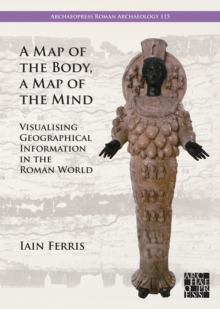
Roman Funerary Monuments of South-Western Pannonia in their Material, Social, and Religious Context Paperback / softback
by Branka Migotti, Marjeta Sasel Kos Jamison, Iva Radman-Livaja
Part of the Archaeopress Roman Archaeology series
Paperback / softback
Description
This book has come about as a result of the project 'Roman Funerary Monuments of South-Western Pannonia in their Material, Social, and Religious Context', unfolding between 2015 and 2018 in the Croatian Academy of Sciences and Arts under the auspices of the Croatian Science Foundation, with B.
Migotti as the project leader and M. Šašel Kos and I. Radman-Livaja as collaborators. 'Roman Funerary Monuments of South-Western Pannonia in their Material, Social, and Religious Context' examines around two hundred funerary monuments and fragments (stelai, sarcophagi, ash-chests, tituli, altars, medallions and buildings) from three Roman cities in the south-west part of the Roman province of Pannonia in the territory of north-west Croatia: colonia Siscia (Sisak) and municipia Andautonia (Šcitarjevo) and Aquae Balissae (Daruvar).
A juxtaposition of the evidence from three administrative units of different dimensions and municipal profiles, and of unequal importance in the wider area, offered a good opportunity for a meaningful comparison of the main components for a reconstruction of material, social and cultural components of the three Romano-provincial communities.
The components studied were: 1 – territorial scope of the individual cities; 2 – quantification of the monuments in terms of kinds and chronology; 3 – structural typology and iconography; 4 – social aspects of the monument use; 5 – ritual and religious aspects (incineration vs. inhumation, classical religion vs. Christianity); 6 – geo-archaeological aspect. The most valuable contributions have been achieved in the geo-archaeological field, as such research had never been carried out in the studied area before.
Information
-
Available to Order - This title is available to order, with delivery expected within 2 weeks
- Format:Paperback / softback
- Pages:290 pages, 308 figures (133 plates in colour)
- Publisher:Archaeopress
- Publication Date:12/10/2018
- Category:
- ISBN:9781789690217
Other Formats
- PDF from £14.40
Information
-
Available to Order - This title is available to order, with delivery expected within 2 weeks
- Format:Paperback / softback
- Pages:290 pages, 308 figures (133 plates in colour)
- Publisher:Archaeopress
- Publication Date:12/10/2018
- Category:
- ISBN:9781789690217










